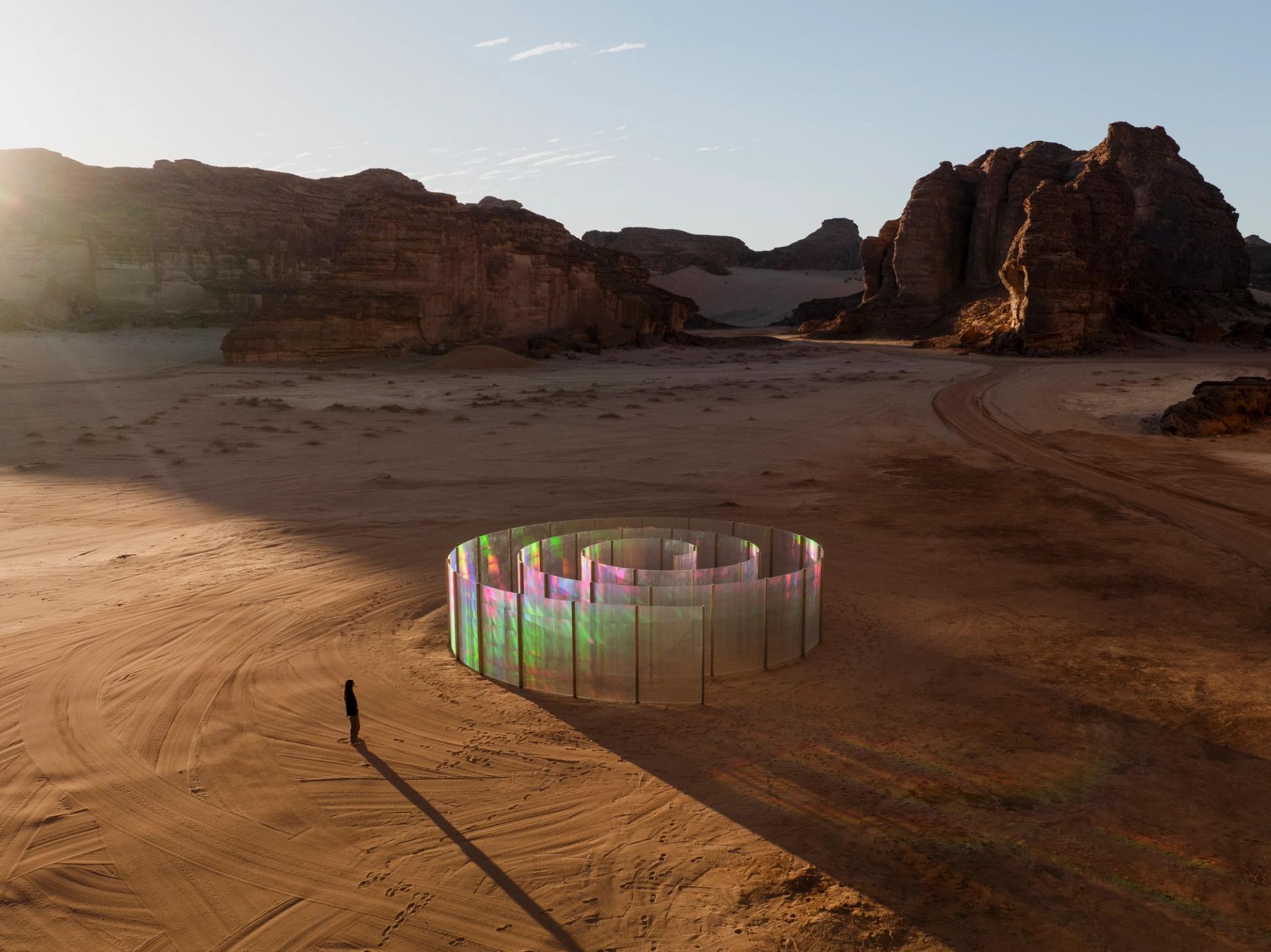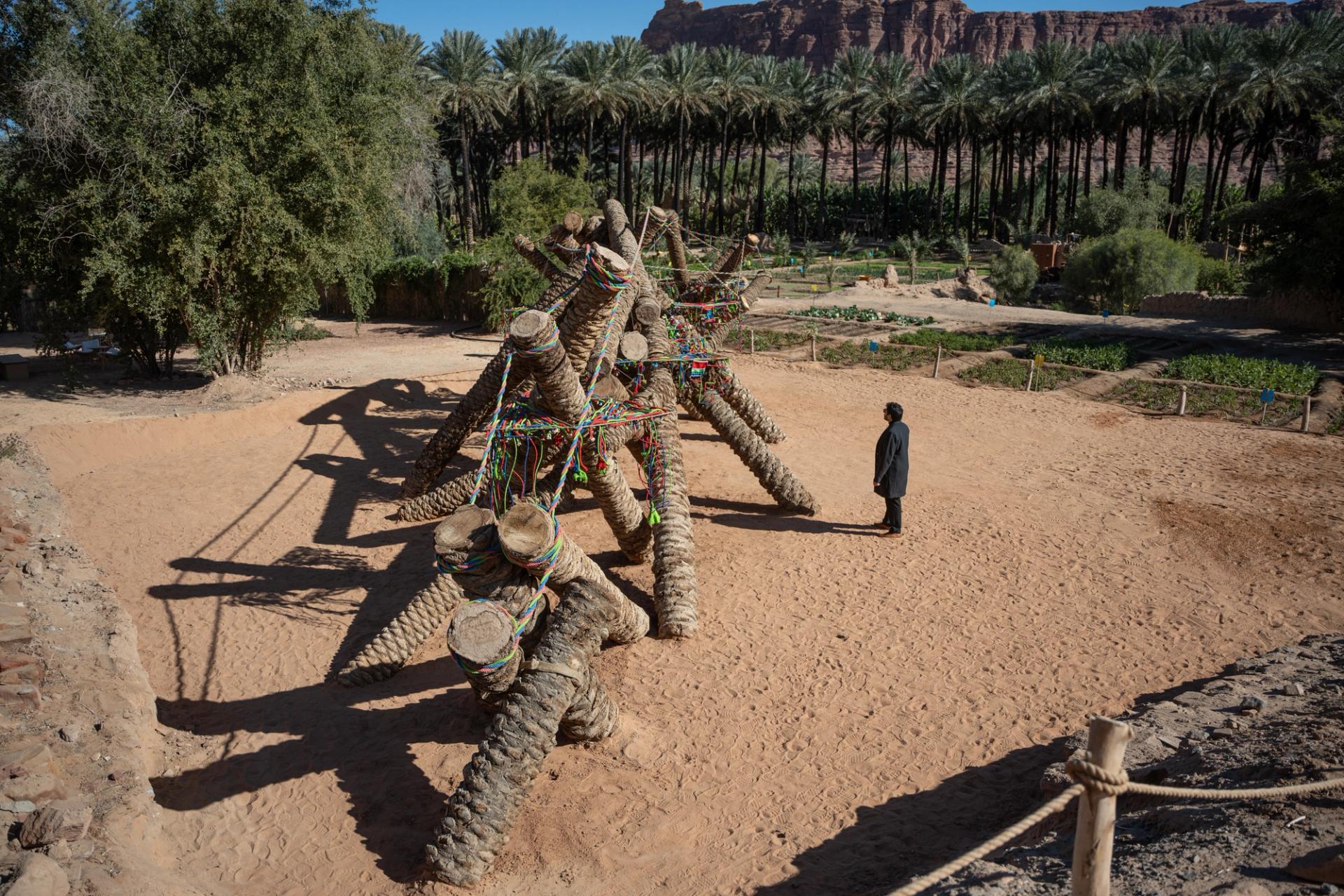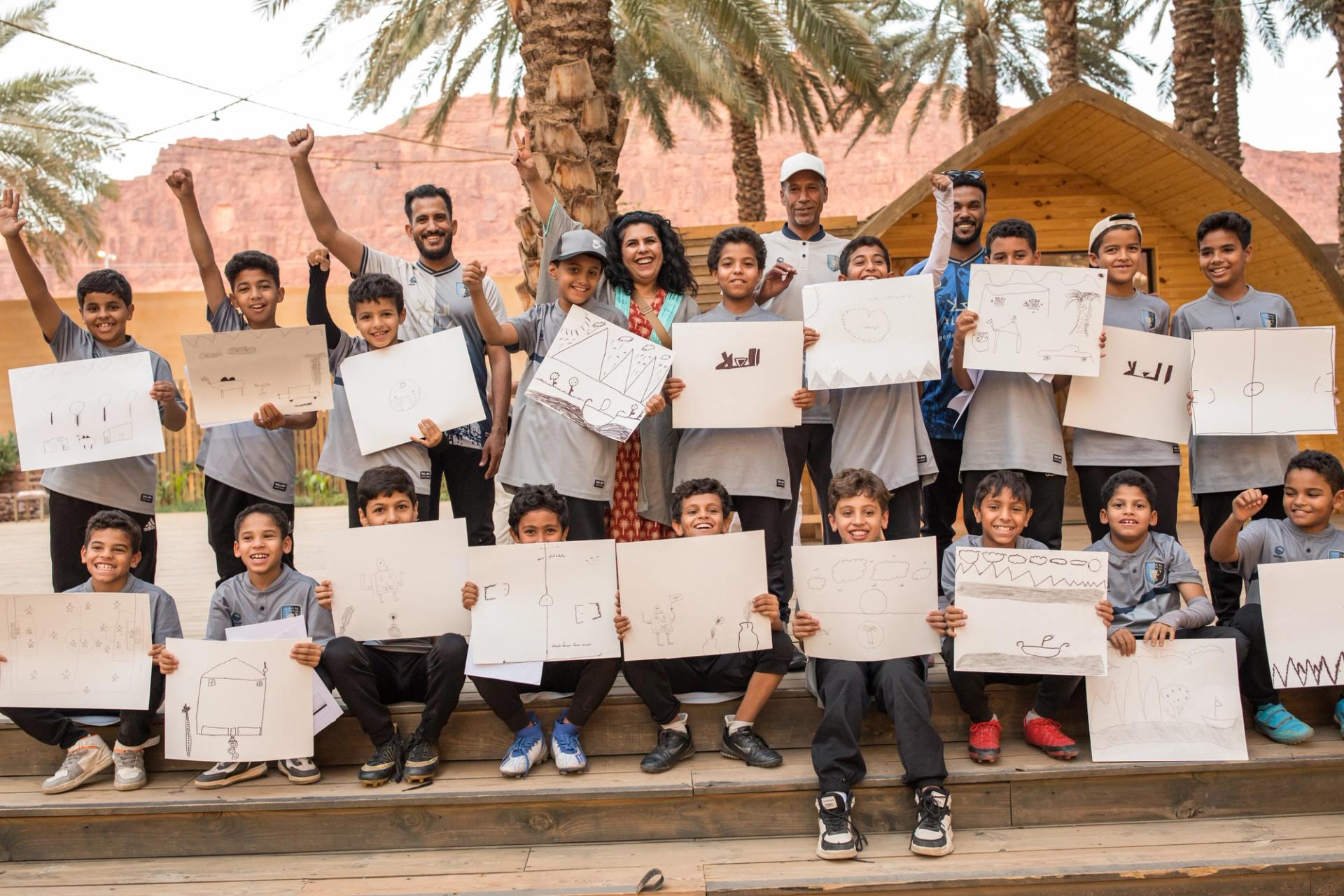Amid arresting desert landscapes and enormous rock formations, the third iteration of Desert X AlUla, an expansive open-air art exhibition, has come to life again in the Saudi heritage and oasis city of AlUla. On view until 23 March, the show, called In the Presence of Absence, features large-scale installations by 17 contemporary artists from around the world.
Although there has been a raft of cultural initiatives that merge contemporary art with ancient sites, Desert X AlUla's Brazilian co-curator, Marcello Dantas, says this event is "different" from others. Dantas is co-curating the event with Maya El Khalil.
It was only in 2017 that the Royal Commission for AlUla (RCU) was founded to safeguard and display the significance and beauty of AlUla, which has slowly become better known internationally. "I think AlUla is a new name for most people. They’re discovering it now and there’s a lot of talk about it," Dantas tells The Art Newspaper. "There is one asset that people don’t realise, which is the virginity of this landscape in people’s minds. This is not something that people have in their visual vocabulary. This is a new interpretation of a very ancient place with a forgotten history."

Monira Al Qadiri's W.A.B.A.R. (2024) depicts the Wabar "pearls" formed when a huge meteorite hit the Saudi Arabian desert Photo: © Lance Gerber, courtesy of The Royal Commission for AlUla
The other co-curator El Khalil, who is based in Oxford, first visited AlUla back in 1997, long before the city started receiving international attention. "I was camping with my family, and I remember, up until today, it was the most spectacular sunrise I’d ever seen in my life,” she told The Art Newspaper about AlUla's landscape.
Having attended the previous iterations of Desert X AlUla and developed a special connection with the location, co-curating the event was an "honour" for her and an opportunity to “reposition the way you understand the desert," she said. "With everything that’s happening around us, ecologically and the climate crisis, how do you really look at a landscape like this, from the viewpoint of geology, of the flora, or time? What lies beneath? That’s another question we are asking."
Art in context
While Desert X was conceived in southern California in 2017, Dantas insists that the Saudi edition is not simply a parachute project. "The practice of contemporary art is inherently international," he says. "We have artists from Korea, Mexico, Saudi Arabia, Kuwait, Italy and Iraq; that is the beauty of it. It is not a national thing; it is experience-related, about putting all these artists in a context that levels them up with what each one brings. I think that is a powerful proposition. Every project is created locally with the context in its own rules, limitations and potential."
Desert X AlUla's offering this year includes multi-layered works with strong backstories, executed in a range of media including glass, pottery and wood. Moving from one work to another, the experience is a multi-sensory one, at times incorporating the elements of smell and sound.
Out of this world?
Among the participating artists is Monira Al Qadiri, the Kuwaiti conceptual artist who is presenting W.A.B.A.R, which is composed of five large-scale bronze and black objects perched on sand. The sculptures are based on Wabar "pearls", the spheres found by the early 20th-century British explorer Harry St. John Philby in the Empty Quarter desert in the Arabian Peninsula. He was told by locals that these black beads were pearls, but—as was later verified by a specialist at the British Museum—they were in fact formed when a huge meteorite hit that area of the Saudi Arabian desert.
Elsewhere, the Saudi artist Filwa Nazer invites visitors to climb her bridge-like installation, Preserving Shadows, which is shaped like the skeleton of a snake. It represents the idea of "fear and hostility in relation to the nature of the desert," Nazer explains

To Breathe – AlUla (2024) by the South Korean artist Kimsooja Photo: Lance Gerber, courtesy of The Royal Commission for AlUla
Another eye-catching work, To Breathe, by the South Korean artist Kimsooja, is formed of a vast spiral structure, coloured in iridescent tones. Meanwhile, the Lebanese artistic duo Rana Haddad and Pascal Hachem unveiled Reveries, a trio of tall towers of mounted terracotta pots that pay tribute to the region's craftsmanship.
Desert X AlUla is part of the AlUla Arts Festival (until 2 March), a series of exhibitions and events, largely free to the public. As part of the programme, the sixth edition of the $100,000 Ithra Art Prize was awarded this year to the Saudi artist Obaid Alsafi, who unveiled a monumental, preservation-themed work made of palm tree trunks. Meanwhile, in the central AlJadidah Arts District, the Moroccan British photographer Hassan Hajjaj is exhibiting vibrant portraits of the local community.

Obaid Alsafi won the $100,000 Ithra Art Prize with his work, Palms in Eternal Embrace (2024) Courtesy of The Royal Commission for AlUla
Among the biggest cultural projects currently taking place in AlUla is a major land art commission by the leading Saudi artist Manal AlDowayan, who will represent the kingdom at the Venice Biennale this year. In AlUla, AlDowayan's exhibition, Oasis of Stories, features dozens of drawings made by the local population—including schoolchildren, farmers and disabled people—in a series of workshops.
The drawings, which depict daily life and local traditions, will later be inscribed onto walls for an installation planned for 2026 at Wadi AlFann, or Valley of the Arts, a future cultural destination in the city's vast desert space. "I told the participants that 'I am building an artwork in AlUla that is dedicated to you.' My contract with the RCU says the artwork has to last for a hundred years," AlDowayan said during a press preview. "So, it's not just you and your family who will see it, but also your grandchildren and your great-grand children."

Manal AlDowayan’s participatory workshops in AlUla in 2023, part of Oasis of Stories, which will be installed at Wadi AlFann Image: Courtesy of Royal Commission for AlUla


